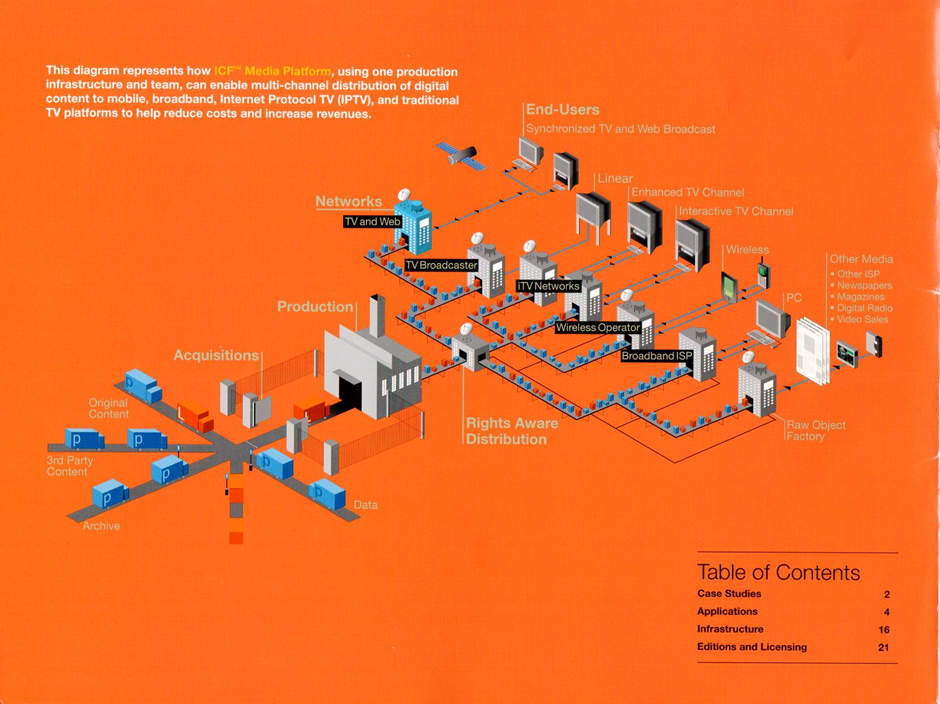Blog
The Media Supply Chain is not enough
Here at Blue Lucy towers, we are constantly intrigued by industry buzz phrases, particularly how even the helpful ones are devalued by overuse and misappropriation. My colleague recently asserted that ‘cloud native’ could mean ‘cloud dependant’ and that far from being inexorably positive it may be extremely limiting. I am going to follow their lead and examine the phrase “Media Supply Chain”, which is interoperable with “Content Supply Chain (CSC)”. My concern is that the term is not new, which is not a problem in itself except that it also risks taking the industry backwards. In its catchy resonance is CSC addressing a limited aspect of the media lifecycle at the expense of the more valuable, if more complex production needs?
Some say the phrase, the imagery that it conjures and the associated terminology such as “content factory” is devoid of the very creativity which drives the industry, and recoil on hearing it. For me, the issue is not so much the utilitarian language but the functional narrowness that CSC has come to represent. A narrowness of operational thinking which is not serving the business needs of the industry today and is demonstrably 20-years out of date.

Interactive Content Factory (ICF) Product Brochure circa 2004.
The image above is from the MCI Interactive Content Factory (ICF) product brochure from 2004. The brochure uses the term ‘media supply chain’ and depicts the aggregation and distribution of packaged content on conveyor belts running through factories. At the time the artwork was innovative, and it is remarkable how much of it is still relevant 18-years later (check out those CRT TVs on hefty stands though). What is wrong with the drawing is that it depicts only the ingest, processing and distribution of finished content, so, far from an end-to-end production CSC. What is worse though, is that this is how many media platform vendors are in 2022 using similar imagery to describe a vision of the future.
A little google-fu shows that there are 20+companies using the terms MSC or CSC in their product or service summary. Assuming that we are not operating in an overcrowded market, the term is obviously being used to cover a broad range of media-centric functions. A closer examination of the CSC offerings highlights that rather like the ICF a generation ago most of these are almost exclusively focused on the management and distribution of finished content. The management and delivery of finished content is an import aspect but alone is too limited to deliver significant business value.
There is some cost benefit in delivery optimisation and certainly the use of service-based cloud technologies provides some insight but treating distribution as discrete from the upstream production takes the industry backwards: It causes operational fragmentation which we have collectively been trying to eliminate for decades. It increases friction, and therefore cost.
Perhaps, the vendor side focus on finished content distribution is motivated by the fact that it is relatively easy; certainly, it is the linear part of the overall media lifecycle which lends itself to cloud provisioned services. Or, perhaps global COVID-19 lockdowns have caused the supplier side of the industry to spend too much time talking to itself. Certainly, the vendor community thinks it is on the right track, CSC appears to have reached peak hype in that the second Media Supply Festival in six months takes place shortly after NAB.

Two festivals in six months is too much for most.
In my opinion, the CSC, as defined by most vendors, does not address the industry’s business needs. Literally no one at any level in any serious media company ever asks us to help them “turbo charge”, “supercharge”, or “transform” their content supply chain function. CSC is often in the requirement mix but in the context of integrated systems not as a specific thing. Media companies tend to have broader vision for a joined-up operation which is complex to deliver or they have specific needs which may deliver significant business benefit but sound less dramatic. We tend to hear requirements such as:
- We have seen the business and cost benefits of remote working during COVID-19 and now want to build on this to create a harmonised, operationally seamless platform for remote and ‘in facility’ based operations.
- We want to take advantage of cloud-based storage and services but do not think a wholesale cloud migration makes sense for us, we are keen to integrate our existing systems with new cloud services.
- We want to use automation where appropriate to ensure that our creative resources maximise the time that they can be creative.
- We want to integrate our production and business systems so that these can share essential data to streamline our operation through efficiency and drive accuracy. We want to create a single view on our operation to improve predictability and provide management information.
- We want to take back control of our operation by in-sourcing more production and fulfilment functions but want to do this in a way that gives us ongoing agility. We do not want to commit the capital required to create a dev’ ops function to enable that adaptability.
- We want to incrementally refine and modernise our production operation without a big-bang transformation approach or by throwing away existing systems that work very nicely thank you.
If any of those ambitions resonate with you do get in touch. Since the first beta of BLAM was shown at IBC in 2018 we have positioned the platform as “the content production and media supply chain management platform for the media industry”. A thirteen word ‘strapline’ is the slickest a product-focused, rather than marketing company like Blue Lucy could come up with – but the inclusion of ‘production’ tools and connectors is important.
Through a broad feature set and a range of more than 50 integration connectors, BLAM is designed to support a media business operation in its entirely, not just the finished assets’ supply chain or even glass-to-glass, but every aspect of the content lifecycle from planning to revenue reconciliation.
By Julian Wright
Share this story
Share on X Share on Linkedin Share via email